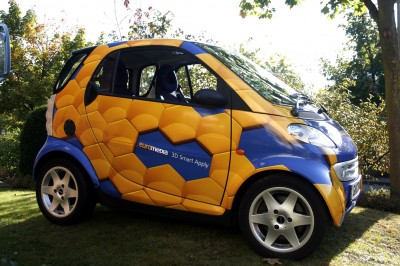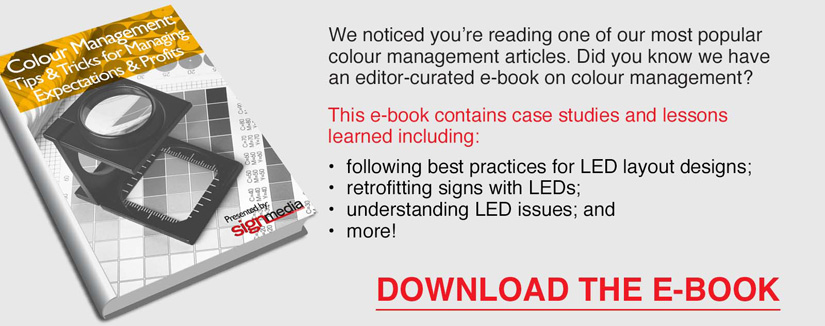Trade show and event graphics
It is common to print, overlaminate, roll up and ship wide-format inkjet graphics for trade shows and other events. A pebble-finish surface will cut glare from bright show lights, while an opaque backing can help the printed colours show through brilliantly.
For a ‘dressier’ look, however, prints are often mounted on foamboard and then overlaminated. They cannot be rolled up, but often the perfectly flat appearance is desirable.
Given these production and finishing options, trade show and event graphics can be printed on a wide variety of inkjet presses. Fabric graphics are gaining some favour, however, as they are more durable—and less expensive to ship—from show to show.
POP displays
In retail environments, colourful, eye-catching posters are used very successfully to promote products. Given their size, they can be printed on a broad variety of presses, from digital offset printers to grand-format flatbeds.
Some POP signs are smaller, including ‘shelf talkers,’ which sit next to promoted products on shelves, and counter cards, which stand near cash registers. Others are larger, like floor displays—sometimes referred to as ‘dumps’—and end-cap merchandising displays at the end of each aisle, fabricated out of card stock.
Backlit signage
With poster-size printers and up, colourful graphics can be produced for backlit applications, including menu boards and illuminated posters. These are common at movie theatres, shopping centres, banks, airports and casinos, among other locations.
Specialty graphics
In addition to the aforementioned ‘traditional’ applications, specialty graphics can be produced using the same printers. A large-format digital inkjet printer, for example, can create floor graphics, window graphics, wallcoverings, decals and labels.
Vehicle graphics
Compared to other forms of advertising, vehicle wraps and fleet graphics reportedly represent the lowest cost-per-impression. Delivery vehicles, cars, trucks and vans can all promote a company’s name, products and services.
Given their size, vehicle wraps can only be produced using large-format display graphics printers, but today the range of inks that can be used for this purpose has grown.








